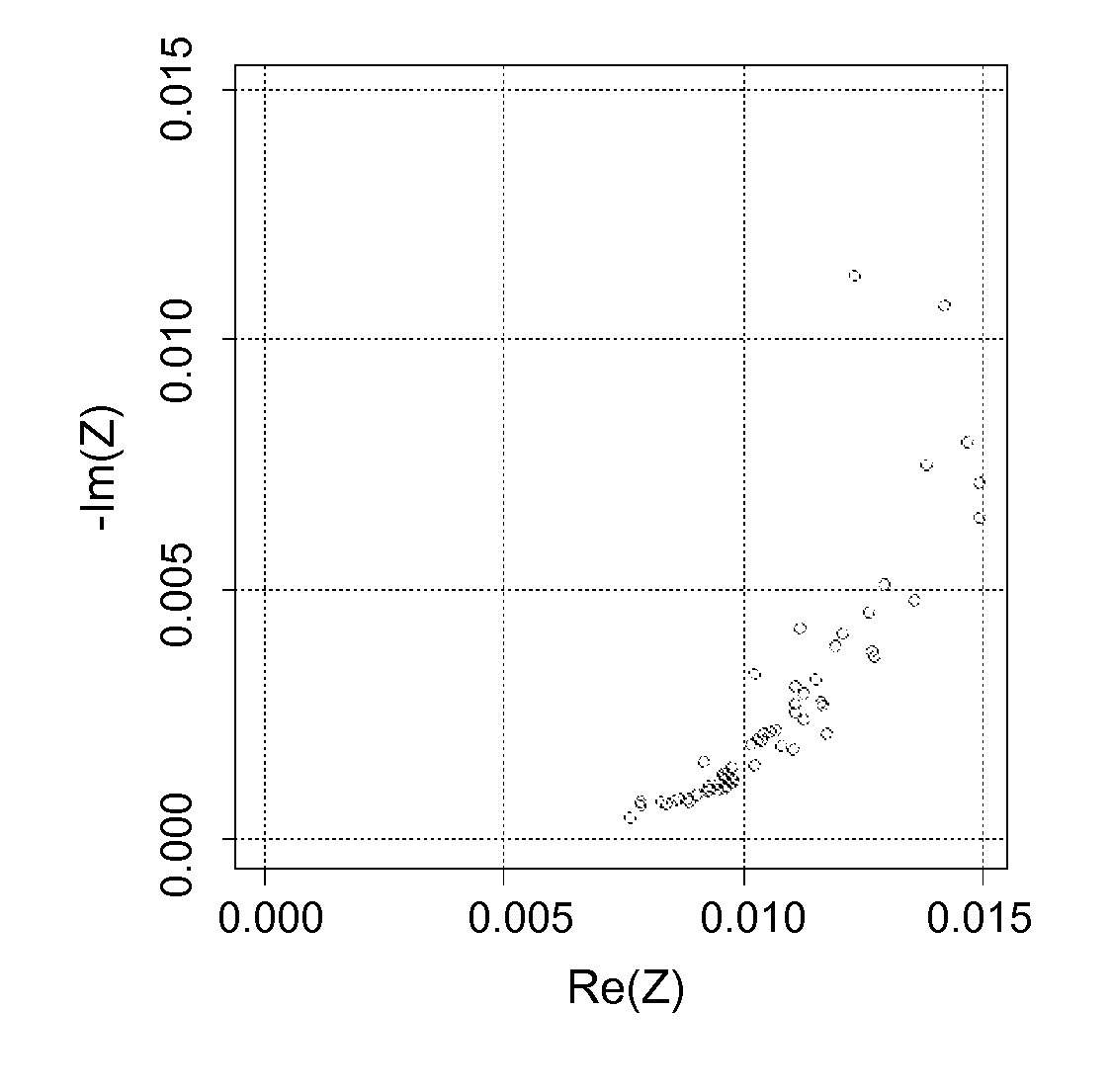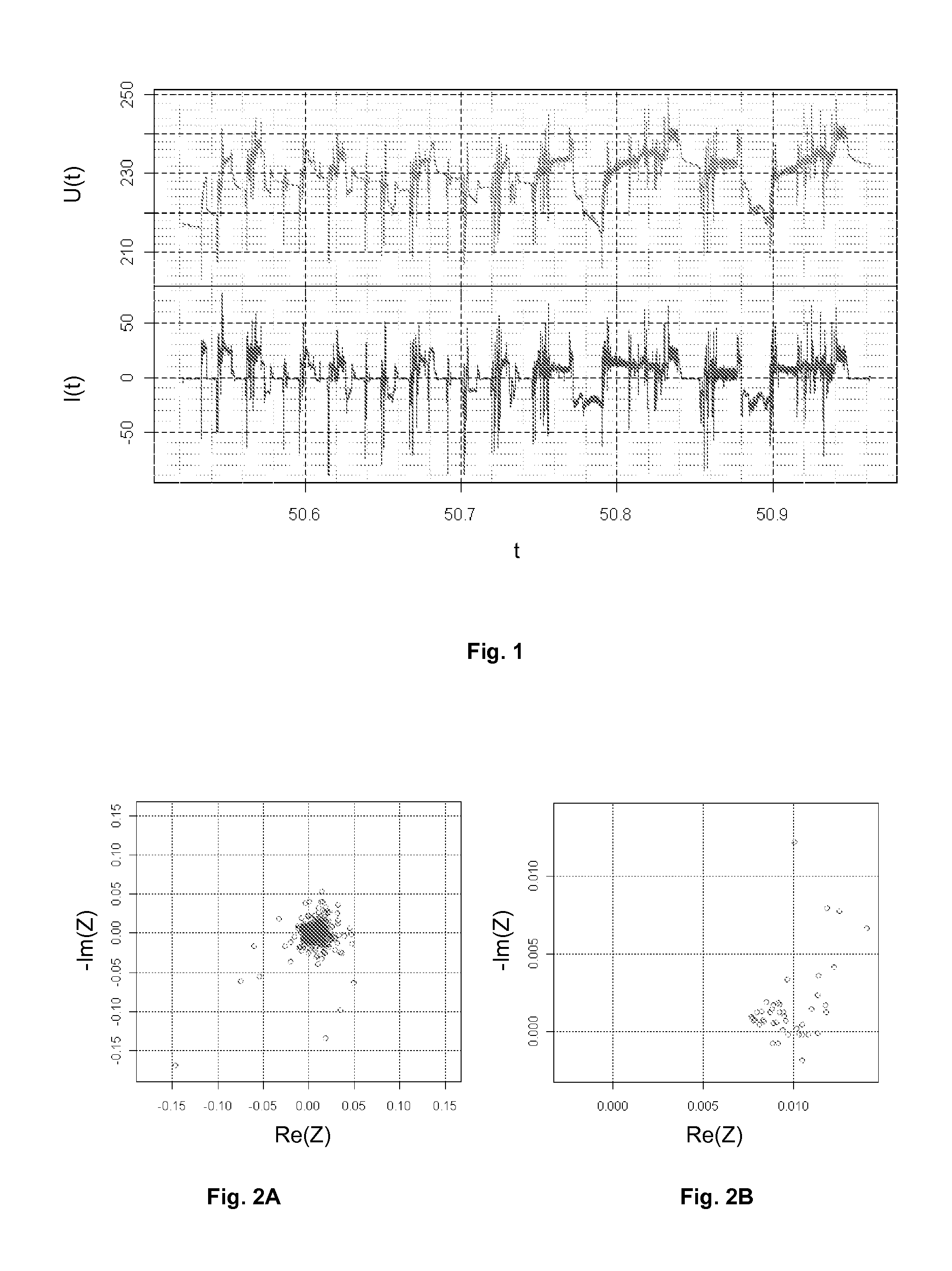Non-invasive method of determining the electrical impedance of a battery
a battery and electrical impedance technology, applied in the direction of material analysis, instruments, measurement devices, etc., can solve the problems of difficult use in a vehicle in operation, large number of reactions that take place during charge and discharge of batteries, and save considerable analysis time, etc., to achieve the effect of convenient implementation
- Summary
- Abstract
- Description
- Claims
- Application Information
AI Technical Summary
Benefits of technology
Problems solved by technology
Method used
Image
Examples
example
[0082]In this example, a hybrid vehicle battery is cycled on a power bench according to a conventional road profile. Thus, the battery undergoes accelerations (battery discharging) and decelerations with regenerative braking (battery recharging).
[0083]A hybrid vehicle battery has a rated voltage of 202 V and a capacity of 6.5 Ah. It has 28 7.2-V, 6.5-Ah elements in series and each of its elements is a 6 1.2-V, 6.5-Ah Ni—MH element.
[0084]1. Acquisition of Time Signals Measuring the Voltage and the Current
[0085]On a power bench, this battery is recharged globally with a voltage measurement on each element. Thus, the available measurements are: 1 current intensity measurement and 28 voltage measurements of each element.
[0086]Determining the impedances is thus achieved on each element of the battery from a discharge current representing a road signal (FIG. 1).
[0087]2. Conversion of Time Signals to Frequency Signals
[0088]The signal is processed by a Fourier series transform, in order to ...
PUM
| Property | Measurement | Unit |
|---|---|---|
| electrical impedance | aaaaa | aaaaa |
| frequency | aaaaa | aaaaa |
| power density | aaaaa | aaaaa |
Abstract
Description
Claims
Application Information
 Login to View More
Login to View More - R&D
- Intellectual Property
- Life Sciences
- Materials
- Tech Scout
- Unparalleled Data Quality
- Higher Quality Content
- 60% Fewer Hallucinations
Browse by: Latest US Patents, China's latest patents, Technical Efficacy Thesaurus, Application Domain, Technology Topic, Popular Technical Reports.
© 2025 PatSnap. All rights reserved.Legal|Privacy policy|Modern Slavery Act Transparency Statement|Sitemap|About US| Contact US: help@patsnap.com



